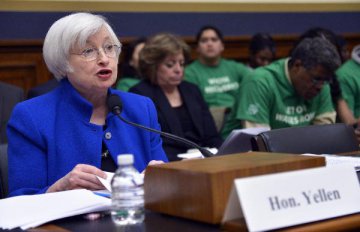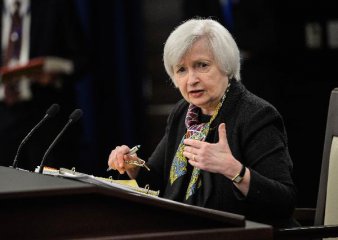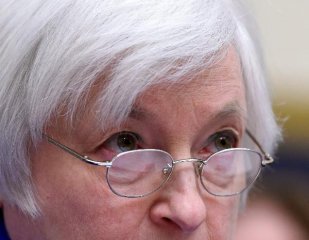
The U.S. Federal Reserve on Wednesday kept its benchmark short-term interest rate unchanged for a third meeting in a row while offering little clue on the timing of its next rate hike.
The U.S. labor market conditions "have improved further" even as growth in economic activity "appears to have slowed", the Fed said in a statement after wrapping up a two-day policy meeting, noting that it will continue to "closely monitor" inflation indicators and global economic and financial developments.
The Fed currently expects that the U.S. economy will expand "at a moderate pace" and the labor market indicators will "continue to strengthen," according to the statement.
The Fed raised its target range for the federal funds rate by 25 basis points to 0.25-0.5 percent in December, the first rate hike in nearly a decade, marking the end of an era of extraordinary easing monetary policy. But the turmoil in financial markets and a slowdown in global economy since the start of the year have raised increasing concerns about the strength of the U.S. economy, forcing Fed policymakers to hold off on any further rate hikes since then.
The Fed's projections released in March showed that officials expect to raise interest rates twice this year, most likely following the meetings in June and December. However, investors are skeptical of such rate hike plan, expecting at most one rate increase this year. There's only a 23 percent chance for a rate hike in June, according to futures markets.
Many investors are looking to how the Fed describes the so-called balance of risks to the U.S. economy for clues on whether it is inclined to raise interest rates. But the central bank has avoided stating explicitly whether these risks were balanced or tilted to one side in the policy statements for the past three consecutive meetings, leaving investors unclear when it will raise interest rates.
Fed Chair Janet Yellen said last month that it's appropriate for the central bank to "proceed cautiously" in adjusting policy, citing the risks to the U.S. economic outlook from global developments. "This caution is especially warranted because, with the federal funds rates so low, the FOMC's ability to use conventional monetary policy to respond to economic disturbances is asymmetric, " Yellen said, referring to the Federal Open Market Committee (FOMC), the Fed's monetary policy arm.
"Although the downside risks have diminished since earlier in the year, I still judge the balance of risks to my inflation and growth outlooks to be tilted slightly to the downside," William Dudley, president of Federal Reserve Bank of New York and a close ally of Yellen, said earlier this month. "I judge that a cautious and gradual approach to policy normalization is appropriate," Dudley said, signaling a short pause for the central bank's rate hikes.






















Latest comments